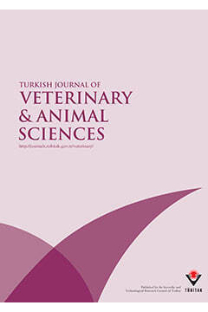Helminth Infections in Tench (Tinca tinca) from Kapulukaya Dam Lake
This study was conducted to determine helminth infections in tench (Tinca tinca), caught in Kapulukaya dam lake. The tench were transferred to the laboratory alive or recently dead. Thereafter, they were necropsied. Postmortem examination of the fish revealed that 84% were positive for various helminth species. Asymphylodora tincae (97.6%), Pomphorhynchus laevis (26.1%), metacercariae (15.4%), plerocercoids of Ligula sp. (5.9%) and nematode larvae (2.2%) were detected in infected fish. A. tincae was found in the intestine, P. laevis was found both in the intestine and in the abdominal cavity, plerocercoids of Ligula sp. were found only in the abdominal cavity, while nematode larvae and metacercariae were found on the skin and gills.
Anahtar Kelimeler:
Tench, Tinca tinca, helminths, distribution
Helminth Infections in Tench (Tinca tinca) from Kapulukaya Dam Lake
This study was conducted to determine helminth infections in tench (Tinca tinca), caught in Kapulukaya dam lake. The tench were transferred to the laboratory alive or recently dead. Thereafter, they were necropsied. Postmortem examination of the fish revealed that 84% were positive for various helminth species. Asymphylodora tincae (97.6%), Pomphorhynchus laevis (26.1%), metacercariae (15.4%), plerocercoids of Ligula sp. (5.9%) and nematode larvae (2.2%) were detected in infected fish. A. tincae was found in the intestine, P. laevis was found both in the intestine and in the abdominal cavity, plerocercoids of Ligula sp. were found only in the abdominal cavity, while nematode larvae and metacercariae were found on the skin and gills.
Keywords:
Tench, Tinca tinca, helminths, distribution,
- ISSN: 1300-0128
- Yayın Aralığı: Yılda 6 Sayı
- Yayıncı: TÜBİTAK
Sayıdaki Diğer Makaleler
Nazmi POLAT, Mahmut YILMAZ, Derya BOSTANCI, Savaş YILMAZ, Şevket KANDEMİR
Detection of Ehrlichia canis in Dogs by IFA Test and Dot-ELISA
Helminth Infections in Tench (Tinca tinca) from Kapulukaya Dam Lake
Nihat MERT, Münevver AKGÜNDÜZ, Handan GÜNDÜZ, Vedat AKGÜNDÜZ
The Effect of Aflatoxin on Kidney Function in Broiler Chicks
Nihat MERT, Münevver AKGÜNDÜZ, Handan GÜNDÜZ, Vedat AKGÜNDÜZ
Some Biochemical Properties of Arginase in Sheep Mammary Tissue
Fattening Performances of Hamdani and Morkaraman Lambs Born in the Breeding Season and Off Season
